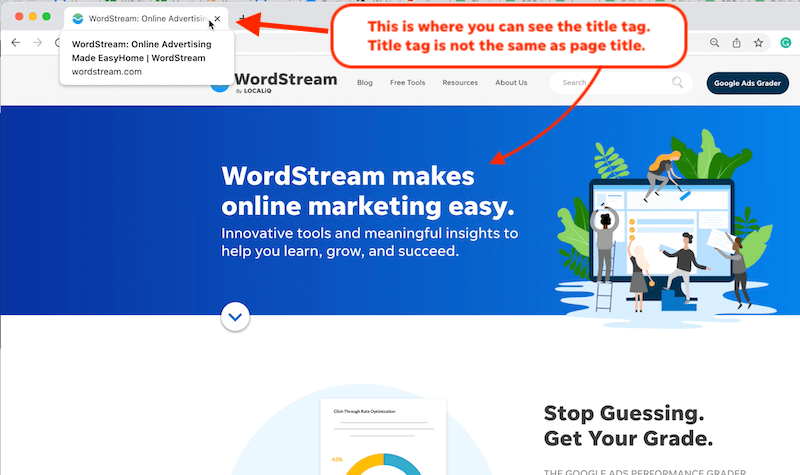Introducing the Unconventional Mediums in Google Analytics Beyond Default Settings
In the world of electronic analytics, Google Analytics stands as a foundation for companies seeking to comprehend their on-line presence. While default setups supply important understandings, the real depth of comprehending hinge on discovering the non-traditional mediums that typically go unnoticed. By venturing past the surface area and diving into the ins and outs of social media sites information, e-mail project performance, reference traffic sources, straight web traffic patterns, and custom-made network groups, a gold mine of info waits for those ready to accept a much more nuanced strategy. What exists underneath these unique tools might simply redefine just how companies regard and plan their on the internet efforts.

Leveraging Social Media Insights
Periodically ignored, yet tremendously useful, is the practice of leveraging social networks understandings within the realm of Google Analytics. By integrating information from systems like Facebook, Twitter, Instagram, and LinkedIn into Google Analytics, services can obtain a deeper understanding of their audience and the performance of their social networks projects.
Via this integration, marketing experts can track and evaluate customer behavior on their website that originates from social networks systems. They can determine which social media sites channels are driving the most traffic, which web content is resonating with the target market, and which campaigns are transforming one of the most leads. This understanding permits data-driven decisions to optimize social media strategies and improve overall advertising efficiency.
Additionally, by incorporating social media insights with Google Analytics, businesses can create much more targeted and customized campaigns - what is not considered a default medium in google analytics. They can use demographic information, rate of interests, and on the internet habits gathered from social networks to refine their audience segmentation and supply customized messages that reverberate with certain client groups. This targeted method can result in higher engagement, increased conversions, and ultimately, boosted roi
Revealing Email Project Performance
Uncovering Email Campaign Performance includes evaluating key metrics and efficiency indications to examine the efficiency of email advertising and marketing initiatives. When delving into e-mail project performance, it is crucial to analyze metrics such as open prices, click-through prices, conversion rates, and unsubscribe rates. Open prices suggest the percent of receivers who opened up the email, providing understanding into the effectiveness of subject lines and sender names. Click-through prices measure the percent of receivers who clicked links within the e-mail, showing engagement degrees. Conversion rates track the percent of recipients that completed a wanted action after clicking on a web link in the email, such as signing or making an acquisition up for a newsletter. Unsubscribe prices highlight the number of recipients that opted out of receiving further e-mails, shedding light on e-mail content high quality and relevance. By analyzing these metrics, marketing experts can fine-tune their e-mail projects for far better interaction and efficiency.
Analyzing Reference Website Traffic Resources
After assessing the performance of e-mail projects via essential metrics such as open prices and conversion rates, the next important action is examining referral web traffic resources in Google Analytics to comprehend where website visitors are coming from and just how they communicate with the site. Recommendation web traffic resources refer to the web sites that guide individuals to your website through clickable links. By delving into this information, businesses can gain understandings into which exterior platforms are driving traffic to their website, whether it be social media systems, companion internet sites, or on-line directory sites.
Evaluating reference traffic can offer valuable info on the performance of external advertising and marketing efforts and partnerships. It helps services determine high-performing recommendation resources that add considerably to site web traffic and conversions. In addition, by recognizing the habits of visitors originating from different reference resources, services can tailor their advertising and marketing methods to enhance engagement and conversions. Google Analytics uses comprehensive records on referral website traffic, enabling organizations to track the performance of each reference source properly and make data-driven decisions to boost their online visibility.
Checking Out Straight Website Traffic Patterns
Discovering the direct traffic patterns in Google Analytics offers useful understandings right into customer actions and the effectiveness of campaigns - what is not considered a default medium in google analytics. Direct traffic refers to visitors that arrive at a web site by straight inputting the link right into their browser, using bookmarks, or clicking on untagged links. Understanding straight website traffic patterns can aid marketing professionals examine the effect of offline advertising initiatives, brand name acknowledgment, and the efficiency of word-of-mouth recommendations
By delving into direct website traffic information, organizations can discover vital info regarding customer intent and brand name loyalty. Evaluating the behavior of straight site visitors, such as the pages they go to, the time invested on website, and the conversion rate, can provide a much deeper understanding of user engagement and the total efficiency of the site in converting site visitors into customers.
Moreover, tracking straight traffic patterns over time permits companies to identify trends, seasonality effects, and the success of particular campaigns or promos in driving direct brows through. This info can then be made use of to fine-tune advertising and marketing methods, optimize site web content, and improve the overall individual experience to optimize conversions.
Utilizing Personalized Channel Groupings
Making use of customized network collections in Google Analytics permits companies to classify and examine their web site web traffic based upon particular standards, offering important understandings for maximizing marketing techniques. Customized channel groups make it possible for firms to produce their own personalized groups of web traffic resources, such as social media, organic search, e-mail projects, and referral website traffic. By specifying these groupings, companies can obtain a click now deeper understanding of how different advertising and marketing networks add to their site web traffic and conversions.
This attribute is particularly helpful for organizations with diverse advertising methods throughout numerous systems. For example, a company running both paid and organic social networks projects can separate in between the 2 to check this analyze their private efficiency properly. In addition, custom network collections can assist determine any type of ignored or taken too lightly website traffic resources that might be driving useful interaction.
Final Thought

By venturing beyond the surface and diving into the ins and outs of social media information, email project performance, recommendation website traffic sources, direct web traffic patterns, and personalized channel collections, a prize trove of info waits for those willing to accept a much more nuanced strategy. They can identify which social media channels are driving the most traffic, which material is reverberating with the target market, and which campaigns are converting the most leads.After assessing the efficiency of e-mail projects through key metrics such as open rates and conversion rates, the following crucial step is evaluating recommendation website traffic resources in Google Analytics to recognize where website visitors are coming from and how they communicate with the website. Custom-made network groups allow firms to develop their very own tailored groups of traffic resources, such as social media, natural search, e-mail projects, and reference website traffic. By leveraging social media understandings, revealing e-mail project performance, examining reference traffic resources, discovering straight website traffic patterns, and using custom-made network additional reading collections, marketing experts can obtain beneficial understandings into their on the internet presence.